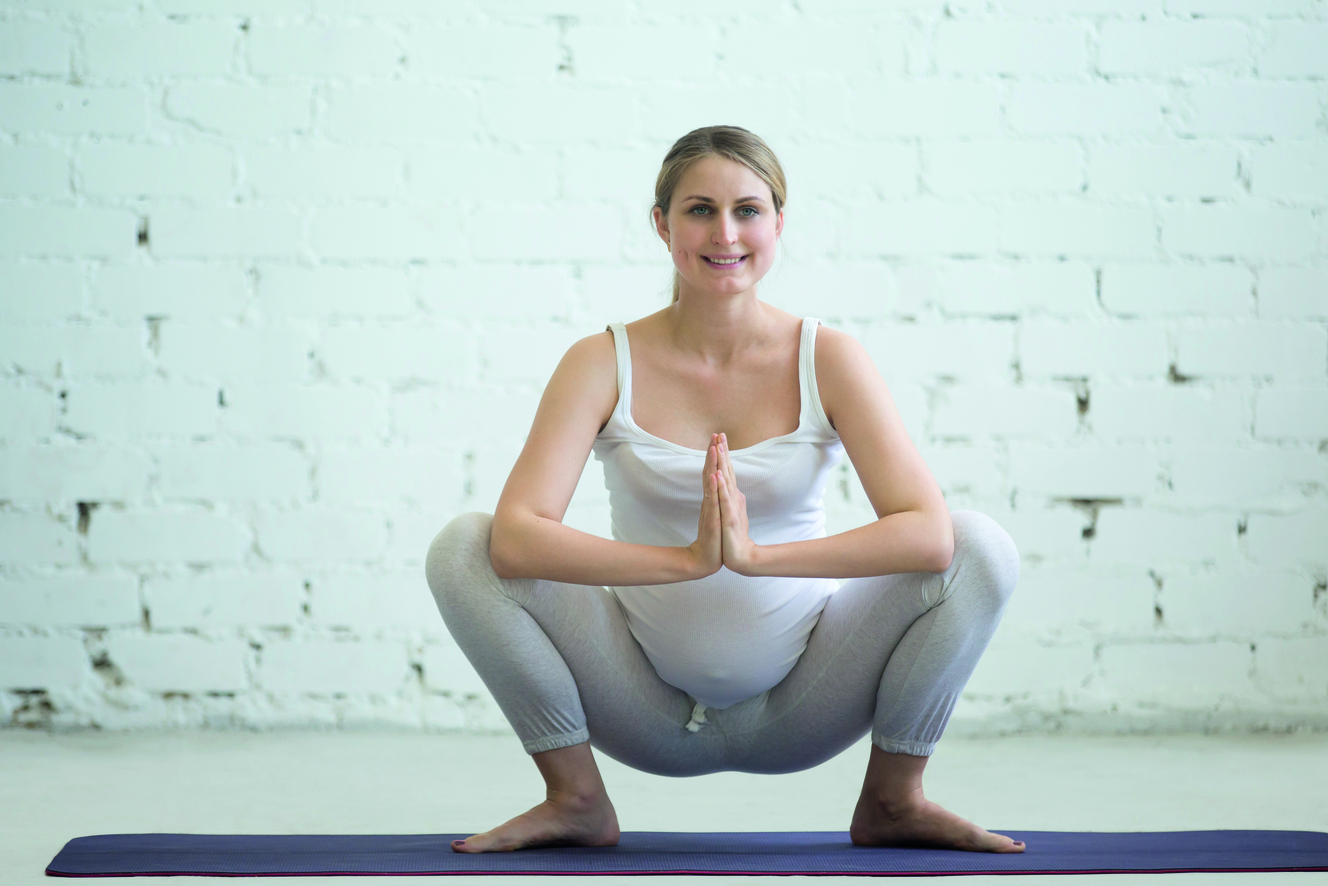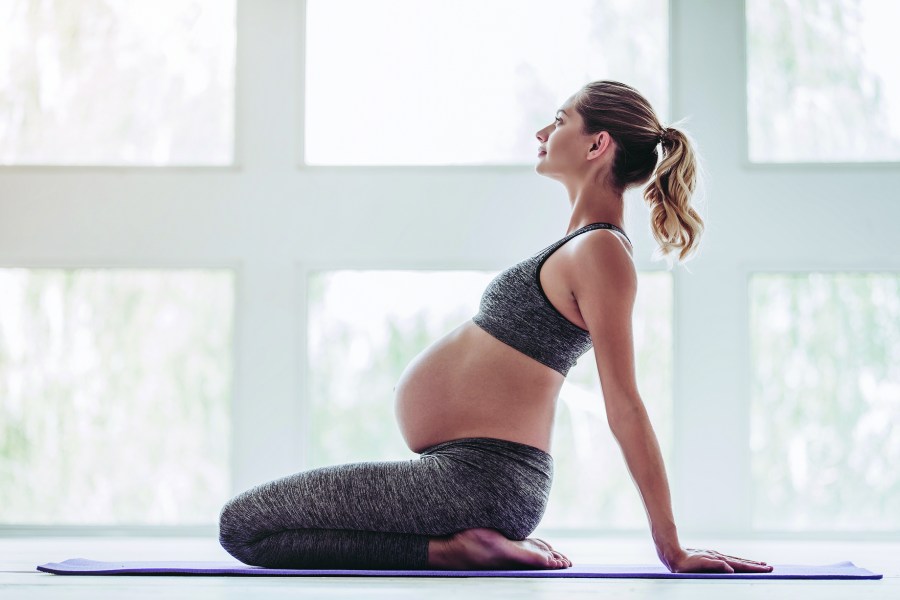Wondering if it’s safe to practice yoga during pregnancy? Prepare your body and mind for childbirth, with this prenatal yoga advice from YogaBellies founder Cheryl MacDonald.
Pregnancy yoga classes involve so much more than simply adapting postures to keep you and your bump safe. ‘A lot of what we do is about making pregnancy comfortable and preparing your body for birth,’ explains Cheryl MacDonald, pregnancy yoga expert and founder of YogaBellies, which offers in-person classes as well as live, online sessions.
‘We support women with pelvic girdle pain, sciatica, high blood pressure and pre-eclampsia, and help with balancing hormones, calming the central nervous system and lowering cortisol levels to help mum relax and not feel afraid of giving birth.’ And, of course, being among other women in a similar situation and offering each other support is beneficial, too. Expecting a little one yourself? Whatever stage of pregnancy you’re in, read on for your step-by-step guide to prenatal yoga.
Your prenatal yoga guide
During the first trimester, when you may be very nauseous, MacDonald suggests you spend a lot of time resting. It’s fine to start or continue a yoga practice, but it should be very restorative, using blocks, bolsters and cushions, and focusing on the breath. If you’re itching to do more, the second trimester is the best one for being more active, as your bump isn’t too big so you’re not too restricted in your movements and, hopefully, you won’t be feeling sick anymore. You’re also less likely to be so tired, so you can be a bit more energetic in your practice.
‘This is the time to strengthen your calves, hamstrings and the whole area around the pelvic girdle. Gentle core work will also help prevent back pain and strengthen the pelvic floor,’ says MacDonald. ‘I always say, you wouldn’t turn up for a marathon with no training, and the same applies to giving birth. It’s arduous on the body and you need strength and stamina.’
Poses to focus on include triangle and warrior poses (next to a wall), butterfly and child’s pose, with knees wide, and you can try the adapted sun salute (see below), but it’s important to follow some general guidelines. Avoid any postures that put pressure on your abdomen (such as lying on your belly, bending forwards from the hips or deep twists) as you want to avoid anything that compresses the uterus. Also, make sure any backbends aren’t too deep, as this can put pressure on the lower back.
Get kitted out with the best maternity activewear for pregnant women
It’s also important to remember that your body will be producing a lot of relaxin, which softens the ligaments and opens up the pelvic girdle in preparation for the birth, but this also means you become hyper flexible. ‘We often see in the second trimester people saying, “Oh, wow I could never get into that pose before”. But if that’s the case, pregnancy is not the time to start doing it because you could easily hyper extend and cause damage. You can still have a vigorous practice, but this is not the time to start new things.’
When you come into the third trimester, everything changes again and it’s time to return to restorative postures. You’re likely to be less mobile and more uncomfortable because of the weight of the bump, and this is often when pelvic girdle pain and lower back pain occurs.
‘We work on strengthening the legs, and focusing on finding comfortable positions for birthing. Do lots of squatting [try garland pose] and warrior positions, but use support.’ Try warrior II with your back against a wall, or rest your front thigh on a chair.

Garland pose is a good option for prenatal yoga
Adapting yoga sun salutations for pregnancy
Adapt your sun salutations to accommodate your growing bump. Most of all, be gentle and move with your breath – inhaling as the body expands, exhaling as it contracts. If you feel dizzy at any point, come down into child’s pose.
- Mountain pose – Place feet wider apart, to accommodate your widening hips.
- Forward folds – Try chair pose instead, to keep space around your bump. If your bump is still quite small, fold forwards but rest your hands on tall blocks.
- Down dog – Focus on pulling up with the sit bones, not taking heels to the mat. Take hands and feet a little wider apart.
- Chaturanga – Keep your knees resting on the mat.
- Up dog – If being on all-fours is comfortable, do cat/cow. Otherwise, sit in easy pose, and gently rock back and forwards.
Qigong: The Eight Brocades with Mimi Kuo-Deemer is a five-day course that teaches you this traditional qigong sequence alongside essential qigong philosophy. Use the eight silken forms to balance vital energy, align with the natural world, support the body’s organs and meridians, and live a grounded, centred, healthy life. Try it for free at onecommune.com
Words: Eve Boggenpoel







